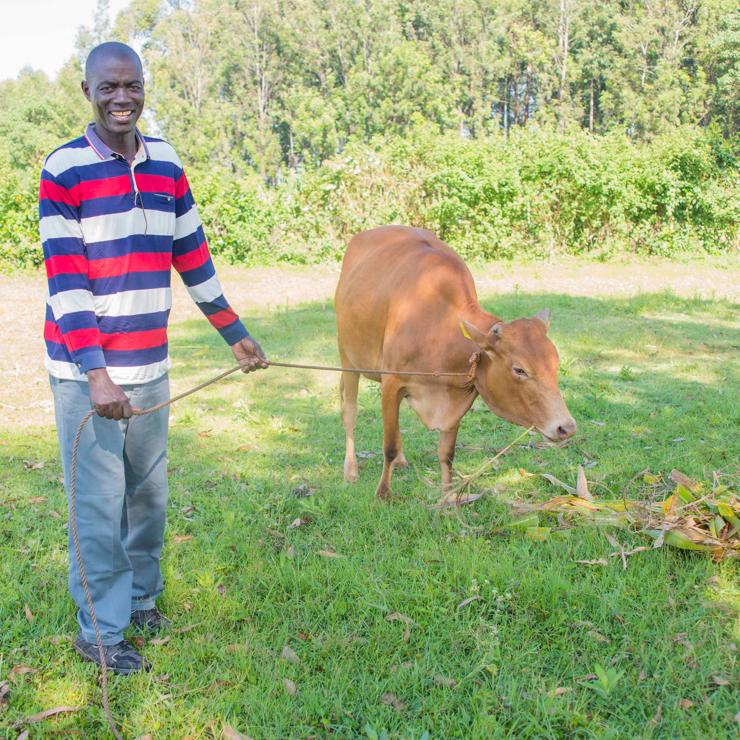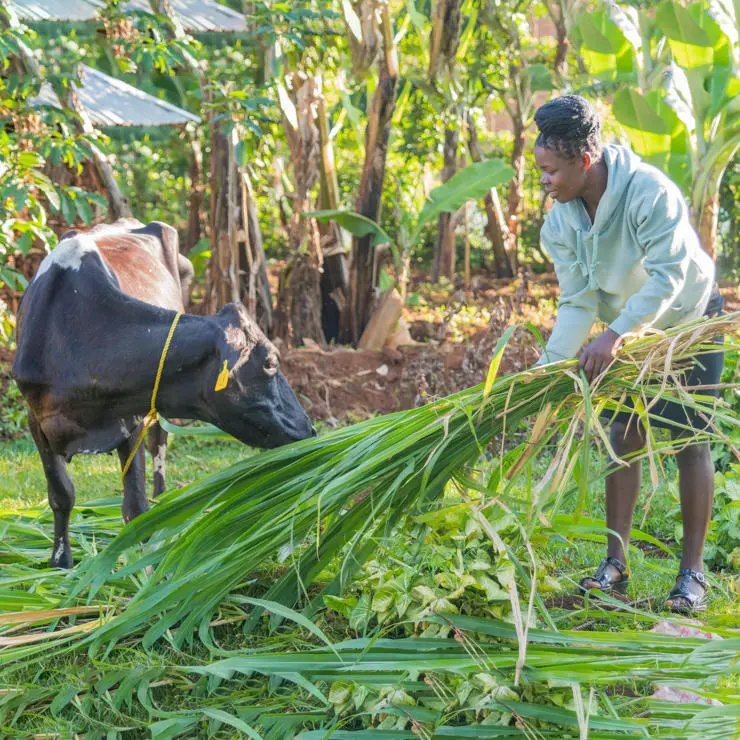Precision Livestock Farming (PLF) has recently emerged as a package of technology which provides real prospects for dairy farmers to make sustainable profit by solving several difficulties while ensuring good animal welfare.
Jacinta Nwachukwu, Professor of Enterprise and Finance at the University of Central Lancashire, led on a study on the effectiveness of the application of wearable sensors as part of the PLF approach in the Great Rift Valley of Kenya.
There were four objectives for this project:
- To assess the penetration rate for wearable sensors, highlighting opportunities for new products and services development.
- To evaluate the potential impact of wearable sensors on three key challenges facing Kenya dairy farmers - animal health and welfare management, organisational arrangements and institutional constraints.
- To investigate the impact of wearable sensors on smallholder owner farmers compared with their medium-large peers on each of the aforementioned challenges.
- To assess whether existing innovation-bundling packages involving both extension workers and experienced dairy farmers help to boost the adoption and effectiveness of wearable sensors.
Empirical analysis involving data from 998 individual owner farmers showed that rate of adoption by smallholder farmers with up to two cows in a herd is 12%, rising to 47% for those with between three and four cows and 37% for those with between five and nine cows. These compare favourably with the average adoption rate of 5%, meaning there is a demand in Kenya for wearable sensors with increasing herd size. Hence, given the importance of the dairy industry in Kenyan economy, the current low penetration rate represents a lucrative marketing opportunity for companies involved in the provision of wearable sensors.
Evidence from our exploratory analysis also confirmed that the adoption of wearable sensors to manage dairy farming is likely to improve animal health and welfare, leading to an increase in the size of a herd and in turn the amount of milk produced. However, the proportion of the additional milk output sold substantially declined, primarily due to poor quality, delayed payment and the inflexibility of purchasing cooperative societies.
Research design, implementation and the survey questionnaire involved two co-investigators; Dr Ngotho and Mr Allan, who are Kenya citizens and currently work in institutions in Kenya. By bringing together collaborators from the University of Central Lancashire and the various partner institutions in Kenya, we were able to share experiences, knowledge, skills and ideas
The study emphasised the role of contract-farming agreements (CFAs) between dairy producers and a designated purchasing company, which ensures that a guaranteed price is paid for a stated quantity and quality of milk supplied over an arranged time period. This should benefit milk processors, dairy producers and their associated input and service providers. To maximise the economic and societal impacts of the findings, there will be a concerted effort to engage with the providers of wearable sensors and key actors in the proposed contract-farming agreement.
This project is of significance financially as, agriculture, in particular animal husbandry contributes substantially to the economy of Kenya. The dairy sector accounts for 4% of GDP, 12% Agriculture GDP and 44% to the livestock GDP. In addition, dairy farming provides a source of livelihood to almost 2 million owner smallholder farmers. The sector's accelerated growth was forecast to be a necessary condition for reducing the nation's poverty level which currently involves 46% of the population living on less than a dollar a day, 37% experiencing food insecurity and 35% of children under the age five are either stunted or chronically malnourished.
The analysis differentiated between the challenges faced by male and female farmers and the effectiveness of wearable sensors in resolving potential gender biased problems. Preliminary results indicate no real difference in the achievements of female and male dairy farmers in the sample of study. The inference is that female farmers are at no greater disadvantage in the dairy production-marketing system.
We anticipate that the cost advantages of this contract-farming plan could stimulate investment in the production of other popular dairy products such as cheese, butter, ice cream and yoghurt. Processing firms could develop new business ventures with supermarkets and other retail outlets to sell these additional food items, creating new job opportunities and income and improving the production-marketing value chain.



